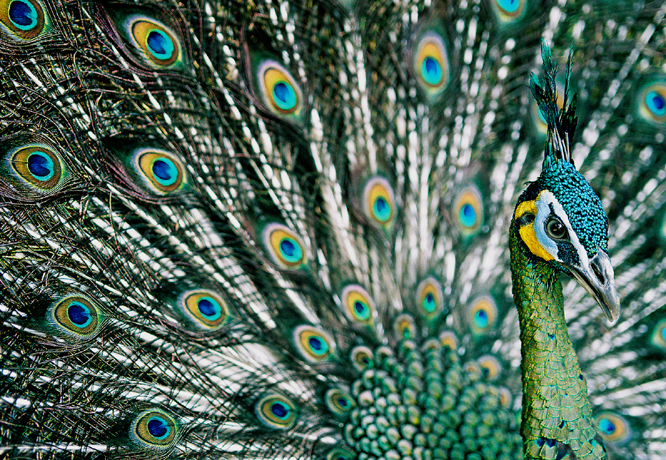- China is home to about 500 green peafowls, all of which are known to occur only in the Yunnan province.
- The mining operations — that include construction of roads, mine shafts and storehouses — are all illegal, the report says.
- Greenpeace’s investigation also revealed that two roads servicing a hydropower project have been built inside the core area of Konglong River Nature Reserve.
Illegal mining and hydropower expansion could spell doom for China’s green peafowl, according to a new report by Greenpeace East Asia.
The extremely rare green peafowl (Pavo muticus) is a close cousin of the more common blue peacock (Pavo cristatus) found across the Indian subcontinent. The green peafowl, too, was once widespread, but less than 20,000 individuals remain in the world today, mostly scattered across Southeast Asia. The green peafowl’s populations are in serious decline and the species is listed as endangered on the IUCN Red List.
China is home to about 500 of these birds, all of which are known to occur only in the Yunnan province. However, illegal mining could be wiping out their last remaining habitats in the country, Greenpeace has found.

Through field surveys and analysis of satellite images of the region, Greenpeace East Asia claims to have found evidence of mining within the core zone of the Konglong River Nature Reserve in Shuangbai County of Yunnan Province, a key habitat of the green peafowl. The mining operations — including construction of roads, mine shafts and storehouses — are illegal, the report says. This is because the activities are in violation of China’s 1994 regulations on nature reserves that prohibits “production installations” from being built in the core area and buffer zone of nature reserves. The mine is being operated by local miner Yinyang Mining Company, Greenpeace said.
“The mining activity in this area is in flagrant disregard of the law, endangering a protected habitat and contributing to the threat of extinction of one of the world’s rarest birds”, Greenpeace East Asia forests campaigner Yi Lan said in a statement.

Another major threat to the green peafowl’s disappearing habitat is the ongoing construction of a hydropower project on the Jiasa River. Greenpeace’s investigation revealed that two roads servicing the project have been built inside the core area of Konglong River Nature Reserve. Conservationists fear that the construction of the hydropower dam, which is scheduled to be completed this year, could push the bird to the brink of extinction in China.
“In the dry season the birds rely on the seeds of aquatic plants found along the river to survive,” Wan Rong of Chinese NGO Wild China wrote in China Dialogue in April 2017. “The development of the riverside will completely destroy this habitat, while the wider civil engineering works associated with the hydropower plant will encroach on Yunnan’s last expanse of unspoiled, seasonal, tropical forest, causing a wider ecological disaster.”
Greenpeace and other conservationists have called for an immediate evaluation of green peafowl populations in China and urgent protection of the bird’s habitat.
“We do not quite clearly know about the green peafowl’s distribution and activities and further surveys to clarify this are urgently needed,” Han Lianxian, a professor of zoology at Southwest Forestry College in Kunming, told Mongabay. “And until we get these details, all commercial development in the area should be temporarily halted. The system of environmental impact assessment and the process of establishing national nature reserve in China also needs a big change.”

FEEDBACK: Use this form to send a message to the author of this post. If you want to post a public comment, you can do that at the bottom of the page.
Follow Shreya Dasgupta on Twitter: @ShreyaDasgupta